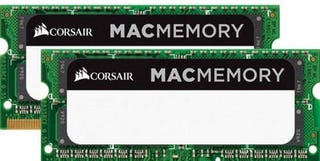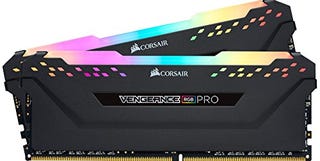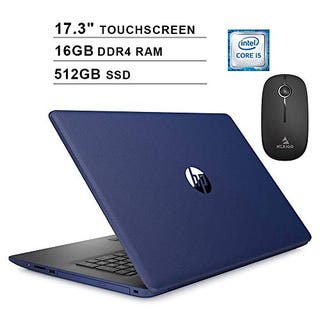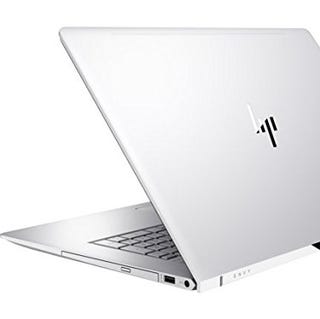The ever-dreaded hour glass. The rainbow spinning wheel of death. Depending on which brand is your particular poison, you'll have seen different versions of what basically equates to your laptop slowing to crawl.
Slow computers are frustrating, distracting, and in many cases, avoidable. There are tons of reasons why your computer could be sluggish—from a packed hard drive to a dearth of RAM space. But before you give up on the old machine, hit a repair shop, or complain to the manufacturer, make sure you've exhausted your other options.
First, Try Restarting Your Computer
This actually does work.
When your computer is running programs in its random access memory, or RAM, it only takes up a fraction of the space. But over time, that RAM memory fills up, which will slow your computer down in the long-run. As your RAM approaches capacity, the operating system begins to rely on swap files to run programs.
Swap files allow your operating system to use hard disk space to simulate extra memory. When the system is low on memory, it swaps out a bit of the RAM memory from an idle program, as the name suggests, freeing up room on the hard drive for other programs to run. As a result of this process, though, loads of hard disk reading and writing takes place, slowing your computer down.
That's why closing down programs can be a good start, because it opens up some space for other programs to run. It's not enough, though, which is why rebooting is a good idea: it makes sure programs don't run in the background while also checking for other causes of a slow computer, like viruses or software updates that have yet to be installed.
Check Your Hard Drive
If your hard drive memory is full, your computer lags because the operating system doesn't have enough space to do things, like use swap files or create temporary files. Ideally, you should have at least 500 megabytes of hard drive space available to ensure your machine hums along smoothly.
On a Mac: Click the Apple menu in the top left-hand corner > Select About This Mac > Click the Storage tab at the top of the new window.
On a PC: Open File Explorer > Click This PC on the left navigation bar > Check out the item labeled something like "Windows (C:)" as this is typically your main drive. If you have multiple drives, you can check out those on this screen, as well.
Upgrade Your RAM
This is one of the priciest methods, but most efficient: buying more memory for your computer should surely give you a speed boost. The more computationally demanding your everyday tasks are on a computer, the more RAM you should have. For instance, if you regularly play desktop games or use video-editing software, you should have a minimum of 16GB of RAM (more if you can afford it).
Otherwise, you'll have to buy additional RAM space. It should be pretty easy to insert the RAM memory stick into the correct corresponding slot, but just in case, check your computer's manual. Keep in mind that if you have a laptop, this may not be a viable option as the only way to upgrade RAM may be to buy a whole new computer. Double check with your manufacturer.
On a Mac: Open Finder > Applications > Open the Utilities folder > Double-click Activity Monitor > Toggle to the Memory section at the top of the window > The bottom of the window will show your memory information. If the graph is green, your leftover memory space is good to go, yellow means that the computer is running memory management software, and red means it's definitely time to upgrade your RAM space.
On a PC: Click the Windows logo or Start button on the taskbar > Right-click Computer > Select Properties
Empty Your Recycling Bin
If you do have less than 500 MB of hard drive memory left, that means it's time to do some spring cleaning. Files build up in the recycling bin—which, notably, is not a garbage can because the files aren't permanently deleted—so an occasional purge will serve you well.
On a Mac: Click and hold the recycling bin icon in your dock > Click the popup that appears as Empty Trash.
On a PC: Double click on the recycling bin > Right click anywhere in the window and select Empty Recycle Bin. Or, you can right-click the recycling bin, itself.
Ditch Unwanted Files
Try clearing your downloads folder next. Everything you download online accumulates, here, so it's worth sorting through and putting files you actually want into the pertinent folders.
Old programs that you no longer use are fair game for this purge, but be meticulous in double-checking that you don't need the files. Most third-party programs like games or camera apps are safe to remove, but if a file has "driver" in the name, you may want to do a quick Google search to see what it does before sending it to the recycling bin.
Next, you should clear out any temporary files, which are programs that your operating system uses to store temporary data, like files that you use while installing updates.
On a Mac: Launch Finder from the dock > Select Applications > Double click the Terminal icon in the Utilities folder > Enter the command "sudo periodic daily weekly monthly" and press the Return key. This should instruct your Mac to launch three maintenance scripts that will delete all temporary files.
On a PC: Press the Windows key + R while typing %TMP% > Click OK > This should bring up a folder with your temporary files, which you can delete with the same scrutiny that you used while sifting through your Downloads folder.
Defragment Your Hard Drive
Here's the problem with everything that you just did: as you delete data, the newly acquired space isn't completely free of data, as there is a "fragment" leftover. As you continue to create these tiny fragments, your computer once again, slows.
Defragmenting or "defragging" your hard drive organizes the messy chunks of fragmented data into easily accessible and orderly blocks. To do this, you'll need to install a third-party program like Tech Tool Pro 12 or Drive Genius 5.
Install Pending Updates
Using old operating system software can take a toll on your computer's speed, too. If all else fails, you definitely should quit clicking the "Remind Me Later" button and actually check for and install any system updates in your backlog.
On a Mac: Go to the Apple menu > Software Update > If an update is available, select Update Now
On a PC: Go to Windows Start Menu > Settings > Updates & Security.
If All Else Fails...
With wear-and-tear, your computer certainly won't last forever, but a case can at least protect the hardware from any crashes (trust me, I've paid $400 to replace just a screen, in the past). Plus, buying plugs to keep dust out of your ports is definitely a good idea—these can also provide some minimal protection from water damage, too.
From a software perspective, programs continue to become more and more RAM-hungry, taking up more memory over the years. You can certainly take matters into your own hands, purchasing additional RAM to help your computer operate faster, but over time you'll run out of additional RAM slots in your machine–meaning it's time to get a new computer.
Typically, you should expect your Mac to be functional for a minimum of four to five years, according to a computer repair service in Brisbane, Australia, which made that conclusion based on years' of experience in fixing laptops and desktops. PCs, by comparison, should last a minimum of three to five years and will usually require more upkeep. If you're a light user or else are pretty actively clearing your unused files and maintaining storage space, you can expect to get a few extra years of usage, of course, but this is just a rule of thumb.
When it does come time to take your computer to the trash compactor in the sky, make sure that you're disposing of your device appropriately before you buy the next one. Cell phones and computers are literally exploding in junkyards and dump trucks, so don't be that guy or gal who throws yet another device into the trash or the recycling bin. That's right, you can't just toss it into the blue bin and hope for the best.
Call2Recycle, a national recycling program, estimates that two thirds of California's waste facility fires in 2017 were caused by explosions in old lithium ion batteries. That's because recycling facilities don't have the capacity to take apart old cell phones or computers by themselves, so they're tossed, instead. You can take the old computer to a local Goodwill store, which will, in turn, find a recycling partner that can help. Just don't forget to wipe all of the data from you computer first (more on that here).
Still stuck? Well, if you can't afford a new laptop—and clearing space in your hard drive or buying more RAM didn't work, either—there's always the library. Most offer laptop rentals or at least let you log onto laptops while on the premises. Get in contact with your local branch to find out what sorts of computing resources it has until you can buy a new one.
"computer" - Google News
February 09, 2020 at 09:00PM
https://ift.tt/39nlVZU
How To Fix Your Super Slow Computer - Popular Mechanics
"computer" - Google News
https://ift.tt/2PlK2zT
Shoes Man Tutorial
Pos News Update
Meme Update
Korean Entertainment News
Japan News Update










No comments:
Post a Comment